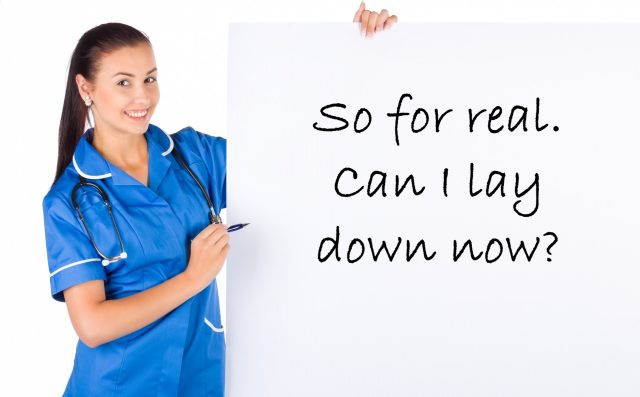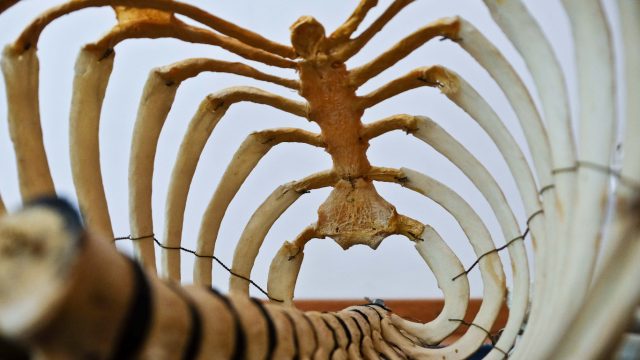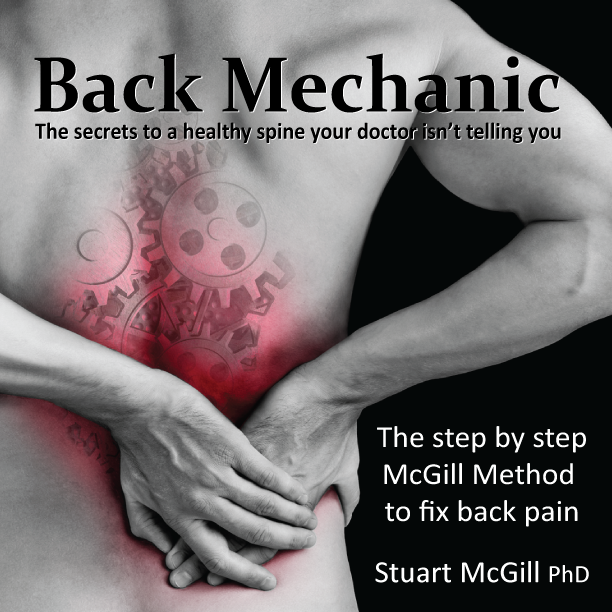Sure, I may have acquiesced to standing at work, but I didn’t exactly suffer in silence. I can pour more eloquence into describing the pain in my knees, calves, feet, and heels, than I could into a love letter. But yesterday I learned I had something to be grateful for – at least nobody’s going to die because I’m uncomfortable. That isn’t necessarily true for nurses assisting in surgical procedures. It’s not like they can just pop out of a delicate operation and lay down because their feet got tired. And if their exhaustion gets the better of the them…
Shannon’s Story: The Test of a Sunny Disposition
It was like he had stepped on a lightning rod. The current curved from his back through his left hip and reached down through his leg and ankle. “It was just the most painful thing I’ve ever felt,” Shannon said. “It was so painful I couldn’t speak. All you can do in moments like that is hang on for dear life.”
It’s the Middle of the Night, and the Pain Is Still Here
As people tend to do when they are awake because of pain, I ruminate about the pain.
There Will Be Charts: Making Health Decisions as a Type C
Knowing I was type C personality gave me a useful frame for understanding why I approach medical care the way I do. I trust doctors up to a point, but I’m not afraid to challenge them, and I need to see the data before I’m convinced a certain course of action is the right one. It’s always bothered me that doctors don’t have a patient-friendly reading list handy for any given condition or treatment. My first impulse when I want to know about anything is to read a book about it.
Epidural Injections: The Weakness in My Bones
So did the epidural injections accelerate the bone density loss in my lumbar spine? I couldn’t prove it in a court of law. Since I didn’t have a DXA scan until seven months after my last injection, I don’t know for sure if the injections were correlated with bone loss. Even if I could prove causation, I don’t think any doctor knows for sure what effect that will have on my fracture risk thirty years from now.
A Body in Motion
In short, I’ve been treating my spine like a bendy straw, which is perhaps a sub-optimal technique. Sure, my spine can move like a bendy straw when it needs to. But are bendy straws really designed to withstand a century of daily use? If not, perhaps I should give my poor spine some help.
An Unwanted Constant in a Time of Change
While Amelia U.’s young adulthood included all the adventures and growth opportunities you’d expect, she also dragged an unwanted companion named “sciatica” around with her.
Book Review: Back Mechanic by Dr. Stuart McGill
Any budding complaints died on my lips somewhere around Chapter 2. Unlike most other books I’ve read that cater to patients, this one was straightforward and packed with information. Refreshingly, it did not seem to assume that I am a couch potato who is incapable of following a doctor’s advice.
In This Office, Standing Was Mandatory
One man complained about the expectation to stand all day, while the other shushed him. Didn’t he realize that this expectation was keeping them both employed? If they eased the physical requirements of the job, the clerks would soon be replaced with women (cheap labor).
How to Find Scientific Papers (for Free)
The truly aggravating thing about digging through research papers is that so many of them are behind a paywall. The good news is that many biomedical papers are freely readable in some form or other if you just know how to find them. Here are my tips for doing so.








